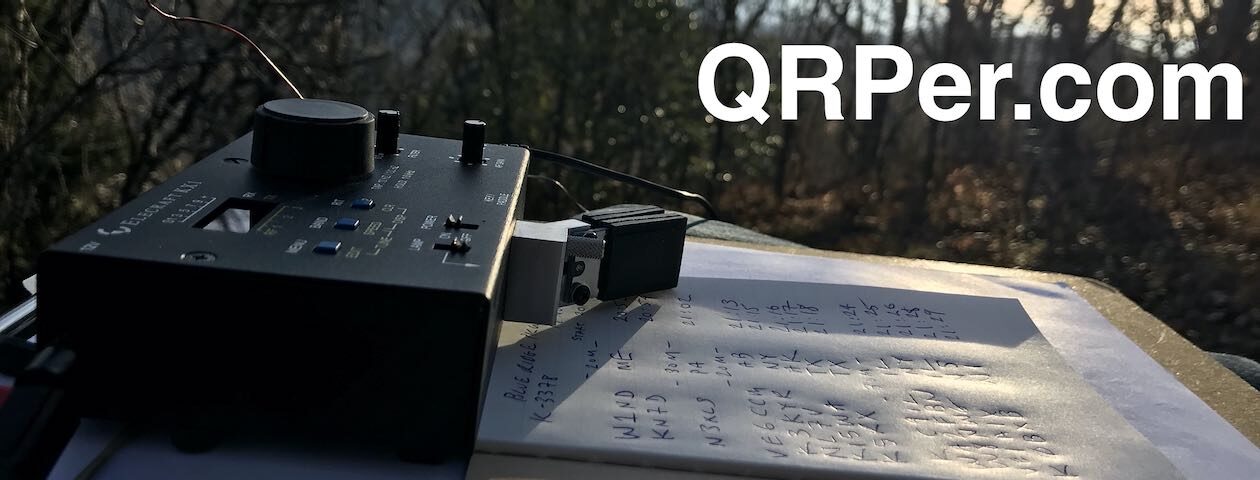Many thanks to Mark (W8EWH) who shares the following field report:
Right Place – Right Time
by Mark (W8EWH)
This is the story of how I was able to introduce about 40 elementary school kids to Ham Radio and more specifically, POTA. All by just being at the right place at the right time.
I was activating K-1518 (Maybury State Park) on the morning of May 16th while my wife was at the dentist. As I pulled into the parking lot, I saw a yellow school bus (Holy Redeemer), but no kids. I figured they must be on a hike or already at one of the many shelters. So, I parked, grabbed my gear, and walked to the spot where I wanted to activate. This is a spot I’ve used before – a picnic table under several tall, mature trees with great branches for hoisting a wire antenna. The location is on the top of a rise at the far end of an open field surrounded by forest. Turns out the shelter at the near end is where the students were, busy with whatever the teachers had them doing. My activation spot seemed available, so I walked back to it staying well clear of the class.
Set up was straight forward (KX3 and EFHW) and I was quickly on the air on 40M. Band conditions were good, and I quickly had my 10 contacts to make the activation. After about 20 contacts there was a break in the action, so I switched to 20M and decided to speak to one of the teachers which, while I was activating, had brought a group of about a dozen students to my end of the field for some sort of activity. I waived to her and introduced myself, first asking if I was in their way. She said no, and asked if she was in my way. Of course not. I explained what I was doing and offered a demonstration if she wanted to bring some or all the kids over. She enthusiastically agreed to this.
So about 10 minutes later, the teachers brought the class over to me. I had them stand behind me in a way that kept them from getting tangled in the antenna and coax. I introduced myself and explained that I was an amateur radio operator using a portable radio and antenna to contact other people like me as part of an activity called Parks on the Air.
In this case I said, I’m set up here in this state park which makes me the “activator”, and everyone else the “hunters”. They thought that was funny. I then told them about the contacts I’d already made to various states around Michigan, and this seemed to get their attention. I then explained that I was not speaking with them, but instead using Morse Code. They all seemed to have heard of this before. OK I said, I’m going to unplug my earbuds, turn up the speaker, and let’s see if we can make a couple contacts.
Before I started calling CQ POTA, I explained what I was going to be sending in morse code. That I was letting anyone listening know that I was operating from a park, so please call me, and here is my call sign – my amateur radio name. I also warned them that just like when you go fishing, you don’t catch a fish with every cast. You must be patient. They understood. I was nervous – I’ve never had an audience like this before. But then I thought, they won’t know if I make a mistake!
It took about 5 or 6 CQ’s before I got bite. Yes, I was starting to get a little worried! But then we had a catch and after I finished the back and forth of the contact I said – that was Georgia – and was greeted with a cheer. Another I said? Yes! I sent another CQ and right away another bite. The kids listened to the back and forth and then I said – Kansas! Another cheer.
I this point I answered a couple of questions (including one about how I was it that I could understand the noises they were hearing) and then the teachers called an end to the demo so that they could start a nature hike.
I finished up the activation with a handful of additional contacts on 20, 30, and 17 meters, then called it a day. See Figure 1. My wife was on her way home from the dentist and she would stop by so we could go for a hike before going home.
I’m so glad I had the opportunity to conduct this demonstration. I’ll never forget it. I hope a least a couple of the kids will remember this and become hams in the future. I only wish I had a handout or two that I could have given the teachers so if they wanted to explore amateur radio with the class later, they’d have some background info and links. I’ll be ready next time.

Mark Yergin
W8EWH










